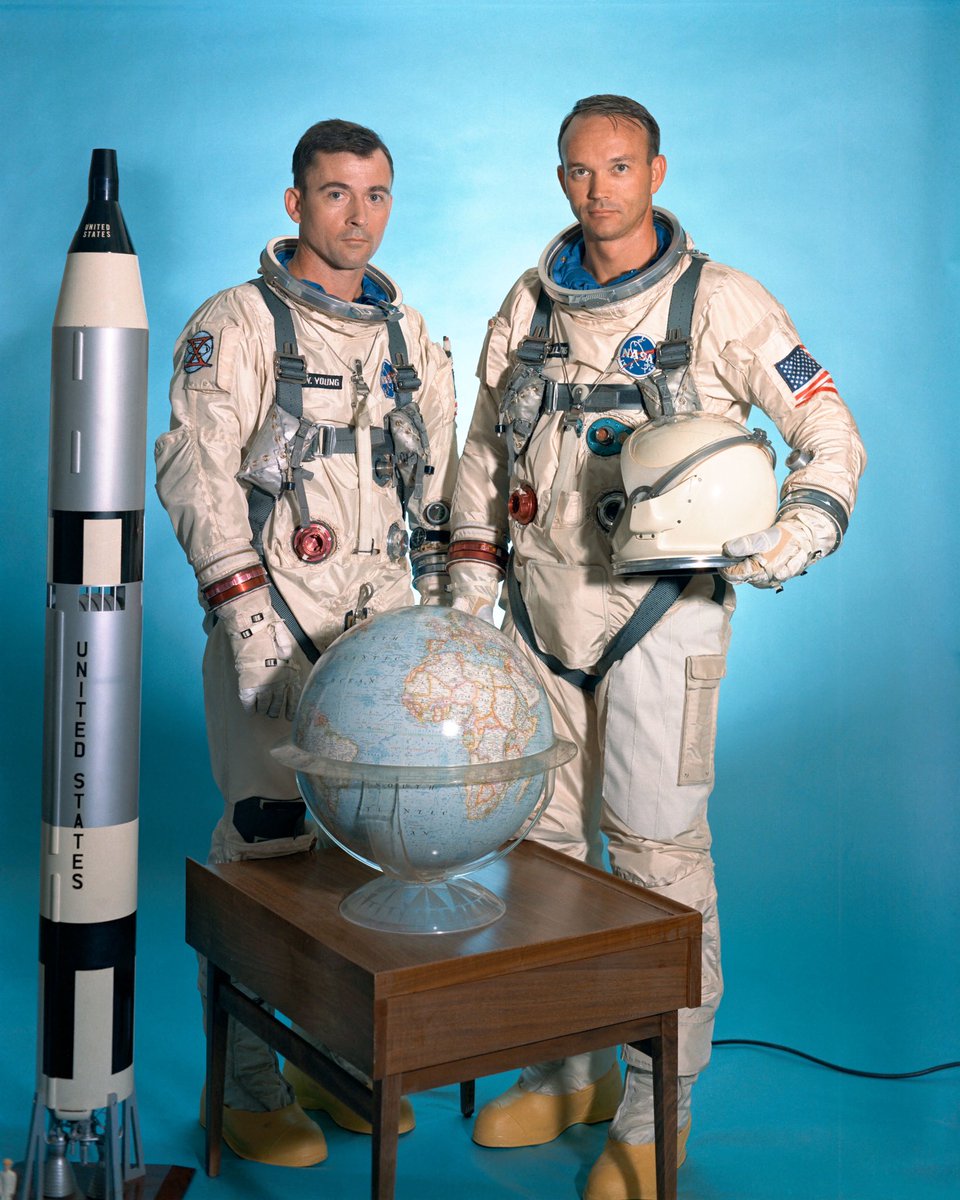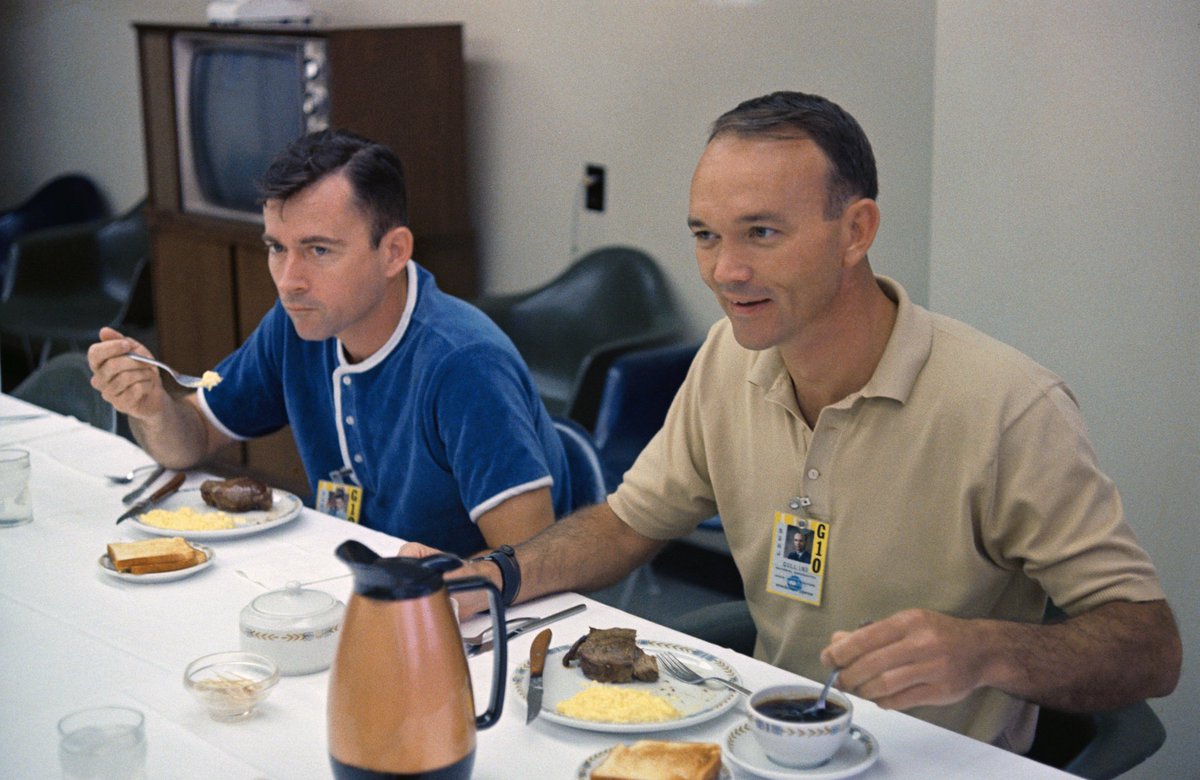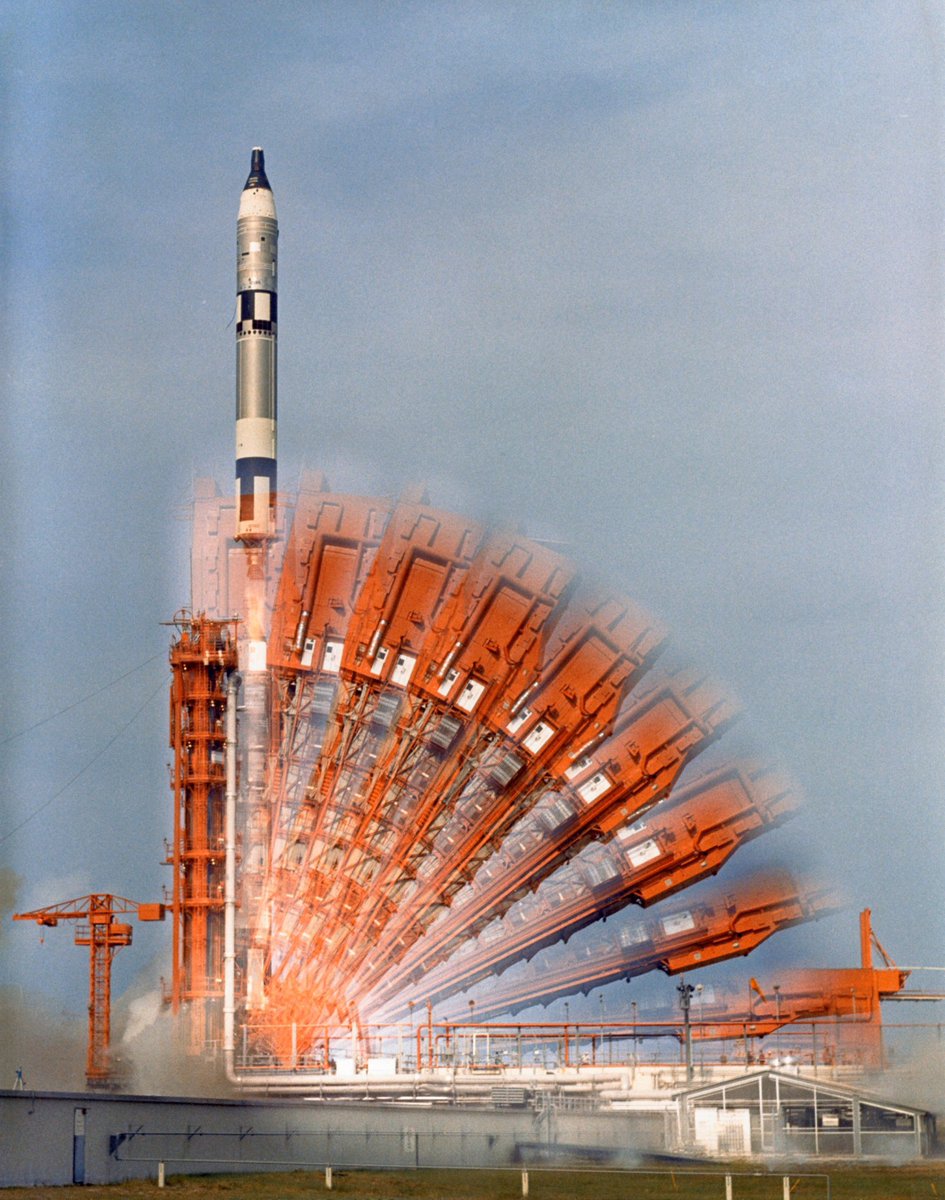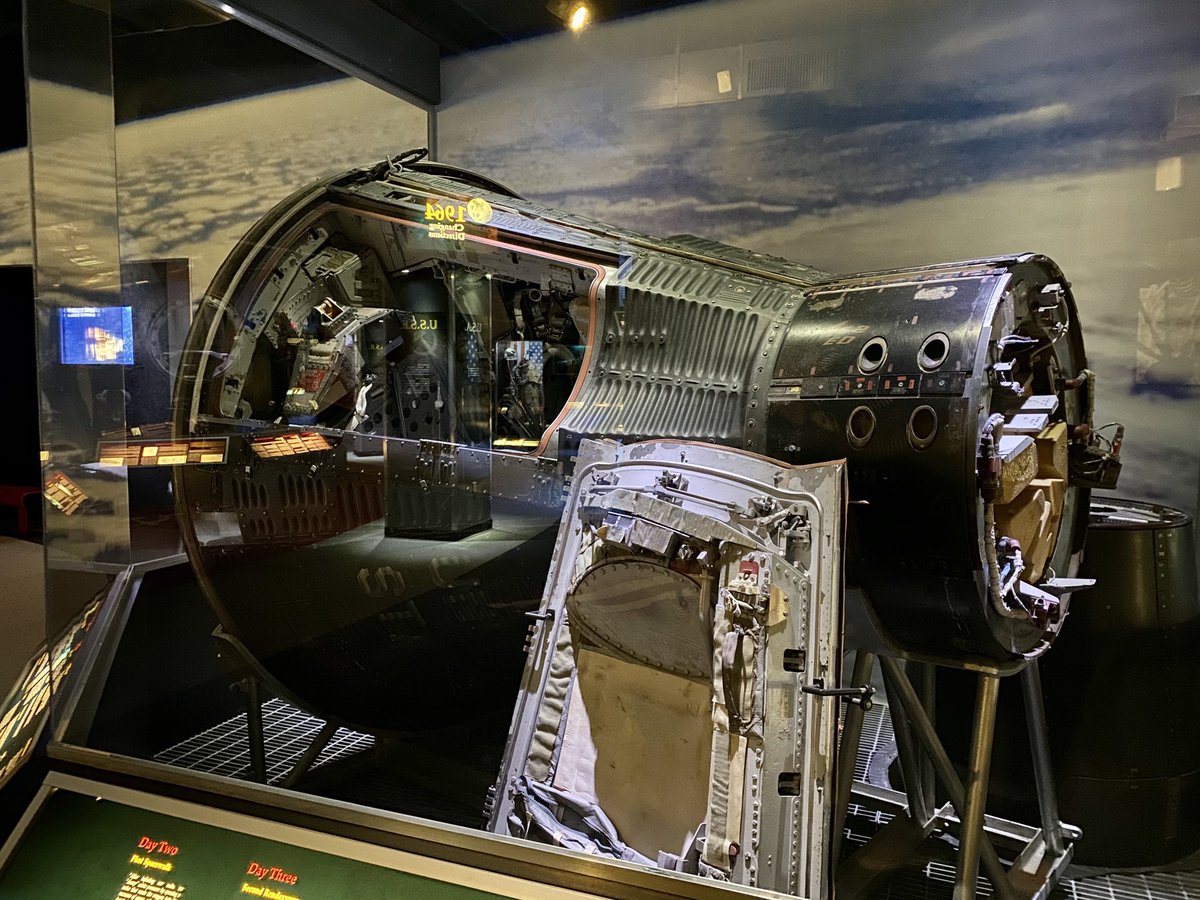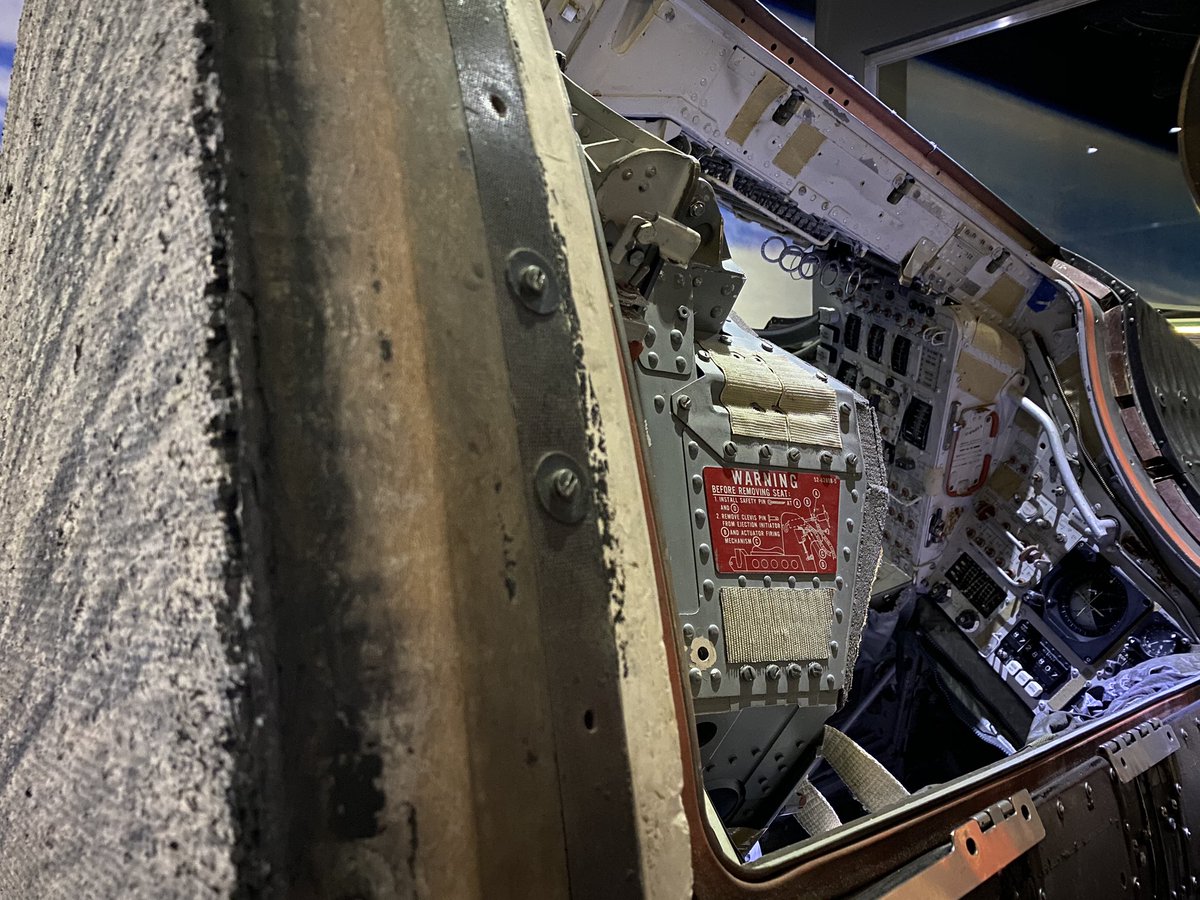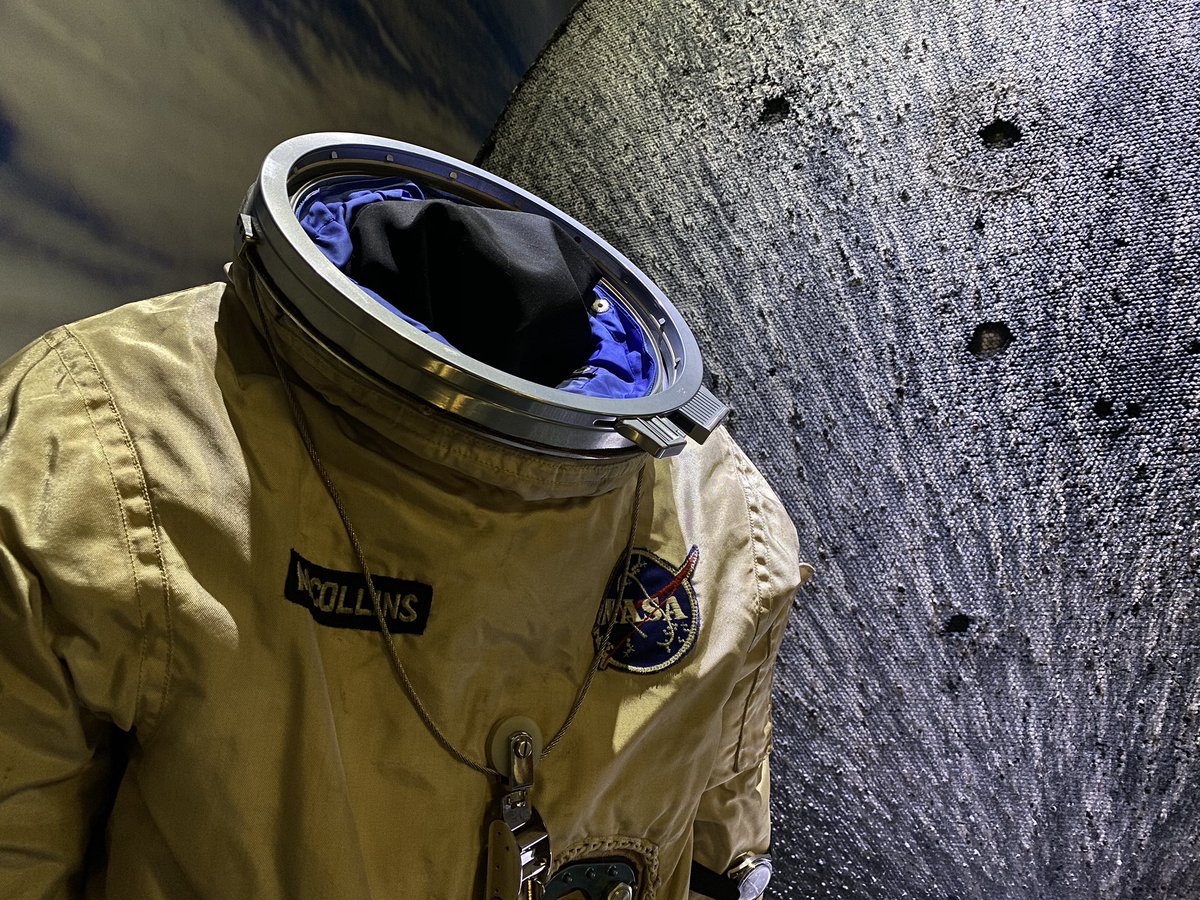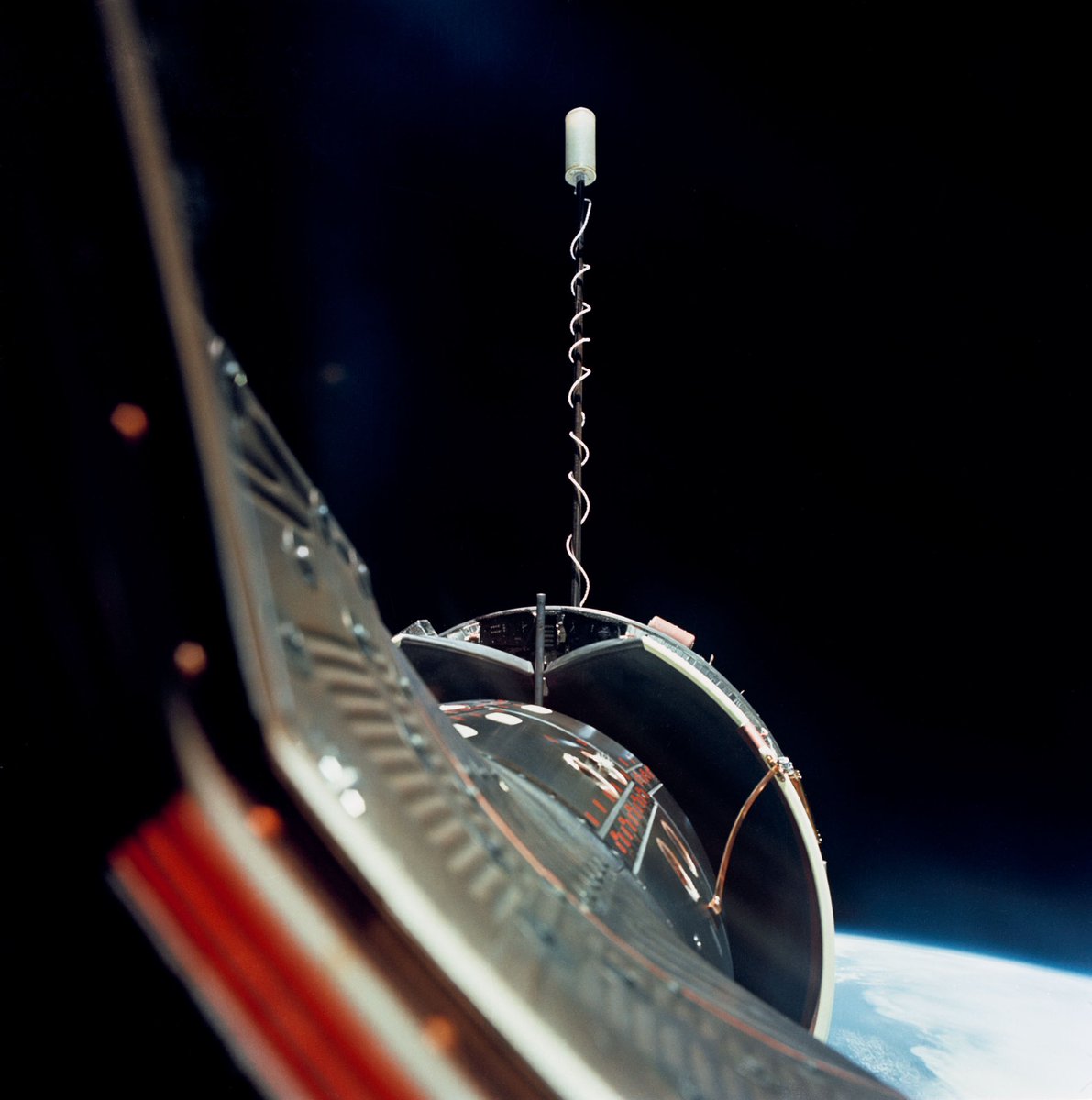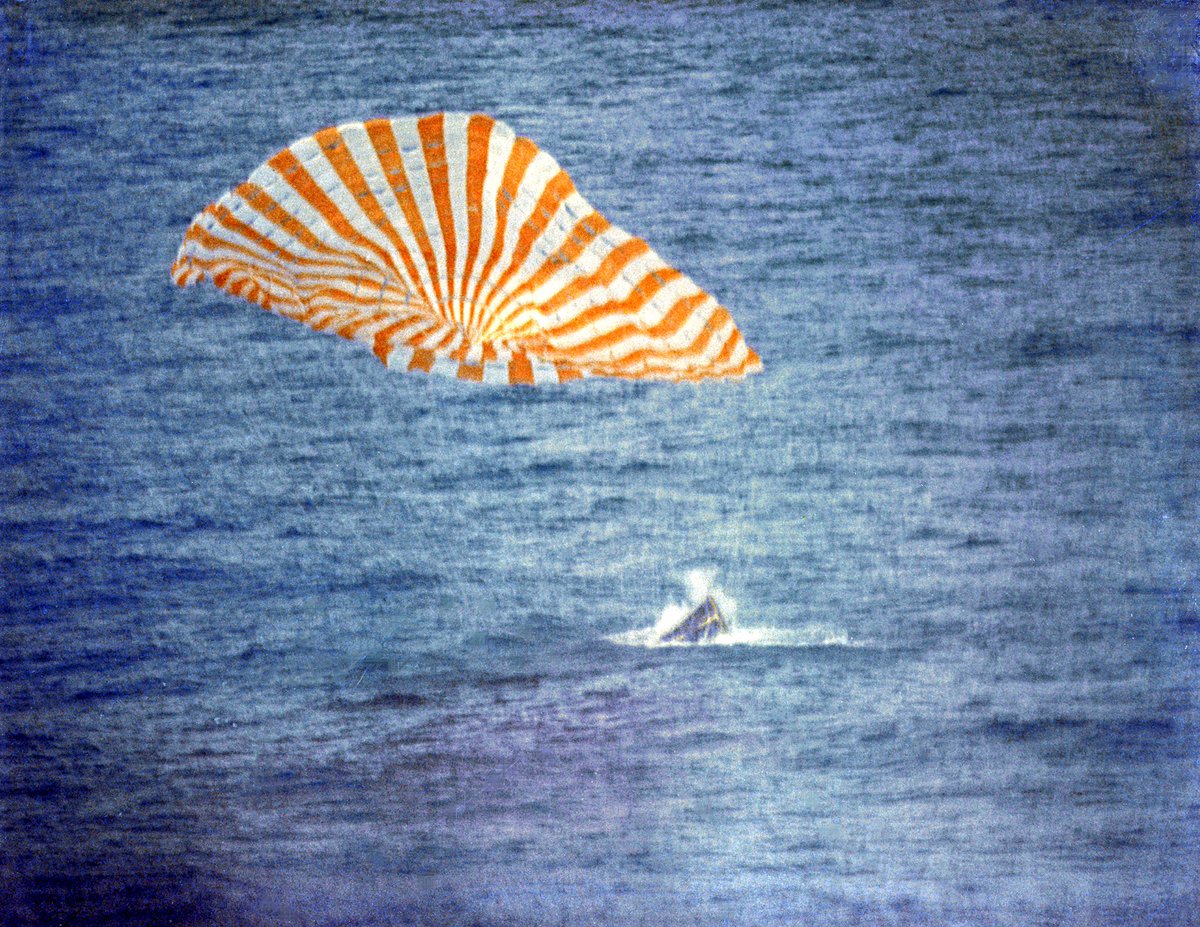On 7/18/66, John Young & Michael Collins launched on Gemini 10, a mission with a lot of firsts.
Gemini 10 was the 1st mission to rendezvous w/ 2 target vehicles. The Agena booster launched for this mission & the Agena booster used in the near disastrous Gemini 8 flight. #NASA
Gemini 10 was the 1st mission to rendezvous w/ 2 target vehicles. The Agena booster launched for this mission & the Agena booster used in the near disastrous Gemini 8 flight. #NASA
This mission was the eighth crewed launch of a Gemini capsule. The plan for the three-day mission had the astronauts performing rendezvous & dockings. Young & Collins are pictured here eating the traditional launch day breakfast.
EVAs, & science experiments examining zodiacal light, weather & UV photography, ion wake measurements, & micrometeorite collections and meteoroid erosion studies.
One of the things I’ve really enjoyed researching is the Mission Reports that NASA put out for these early crewed missions. Pages and pages of technical documentation can offer insights into parts of the mission I’ve never thought about before.
While doing research for my podcast ep on Gemini 10, I found that the initial orbit wasn’t ideal. Pages of documentation went over the maneuvers used to bring the capsule into the same orbit as the Agena. You can listen to all of my podcast episodes here. https://podcasts.apple.com/us/podcast/the-space-shot/id1238688386
Liftoff seen here in a multiple exposure picture. The launch tower was lowered before liftoff. It didn’t fall away at launch.
Gemini 10’s orbit meant that the rendezvous and docking maneuvers used “approximately 400 pounds of propellant, which is more than three times the average amount used during this phase of rendezvous on previous missions.”
The amount of fuel & supplies they could cram into the Gemini spacecraft was impressive. Some of the longer Gemini missions saw astronauts in the cramped confines of these capsules for up to two weeks. I took these pics of Gemini 10 at the @kscosmosphere.
I love this pic. It shows just how little material sat between the astronauts and the heat shield for reentry. #shotoniphone
Here’s the suit that Michael Collins wore during the Gemini 10 mission. #shotoniphone
Gemini 10 was only in #space for just under three days, so things weren’t as cramped, but that didn’t mean that engineers found ways to store supplies just about everywhere in the capsule. While reading the mission report, I found the stowage lists to be quite amusing.
Here’s a list of what was stored in the spacecraft, specifically the left sidewall containers.
“Personal Hygiene towel- two. Roll-on cuff receiver assembly (urine system) one. Lightweight headset, one. EVA Remote control cable, for 16mm camera, one. Penlight, one.”
“Personal Hygiene towel- two. Roll-on cuff receiver assembly (urine system) one. Lightweight headset, one. EVA Remote control cable, for 16mm camera, one. Penlight, one.”
“Voice tape cartridges, eight. Velcro pile, 2 by 6 in, one. Velcro hook, 2 by 6 in, one. Velcro back-to-back tape, 1 by 8 inches, eight pieces. Pilot’s preference kit, one. Circuit breaker, 16mm camera, one. Urine hose and filter, one.”
Such is the practicality of the spacecraft storage. You’ve got to keep your pen lights with hygiene towels and roll-on cuff receiver assemblies & urine hoses.
Every cubic inch of the spacecraft was filled with fuel & everything the astronauts needed for their time in space.
Every cubic inch of the spacecraft was filled with fuel & everything the astronauts needed for their time in space.
There was no way to bring up extra supplies during these missions, so everything that was needed had to be sent up at launch.
I want to end by covering one more part of the Gemini 10 mission. #NASA
I want to end by covering one more part of the Gemini 10 mission. #NASA
The Agena target vehicle was used to boost the orbit of the capsule & for attitude control since the Gemini capsule had expended so much fuel during the initial rendezvous. The Agena target vehicle was the primary choice for rendezvous attempts during Gemini flights. #space
The Agena vehicle worked extremely well. It boosted Young and Collins to the highest orbit ever achieved by a NASA mission until Gemini 11.
Per @NASA command pilot John Young & pilot Michael Collins, “fired the 16,000-pound thrust engine of Agena-10's primary propulsion system to boost the combined vehicles into an orbit with an apogee of 413 nautical miles to set a new altitude record for manned spaceflight.” #Space
After completing EVAs and maneuvers with the Agena, Gemini X re-entered earth’s atmosphere and splashed down east of the Bahamas. The crew and capsule were recovered by helicopters from the USS Guadalcanal.
Splashdown is pictured here. Pic- @NASA
Splashdown is pictured here. Pic- @NASA

 Read on Twitter
Read on Twitter